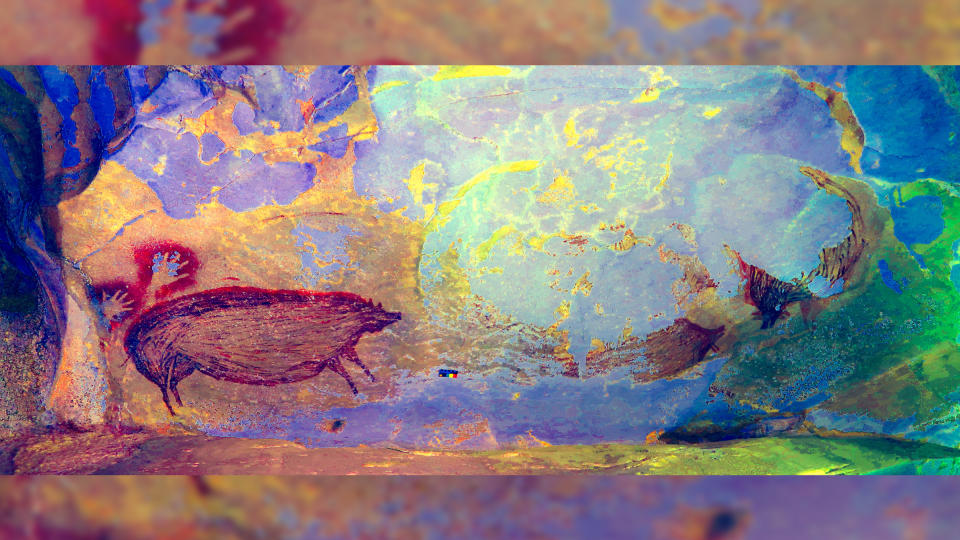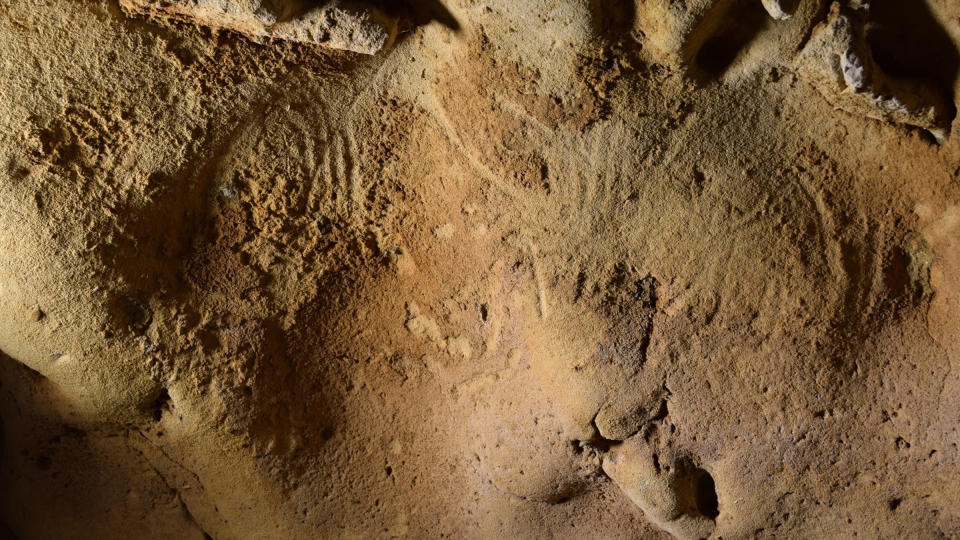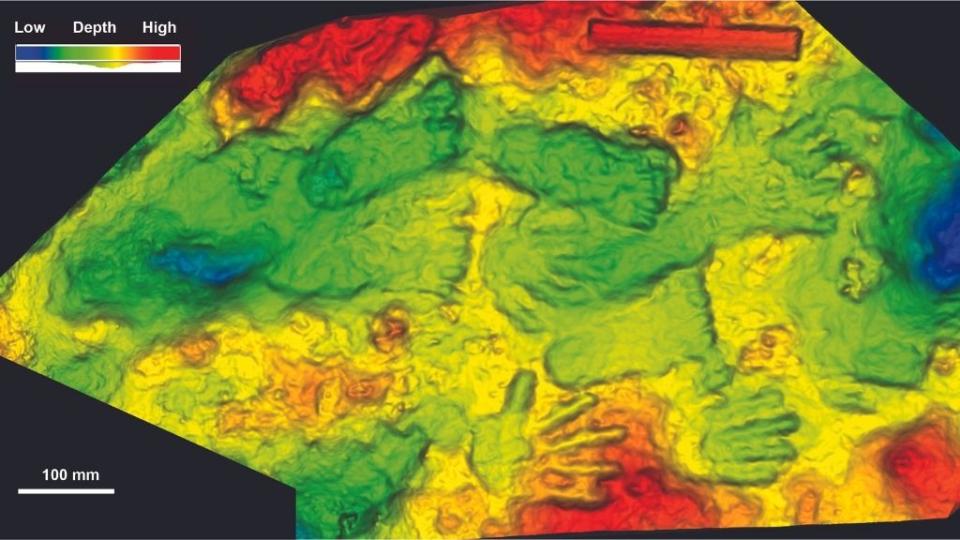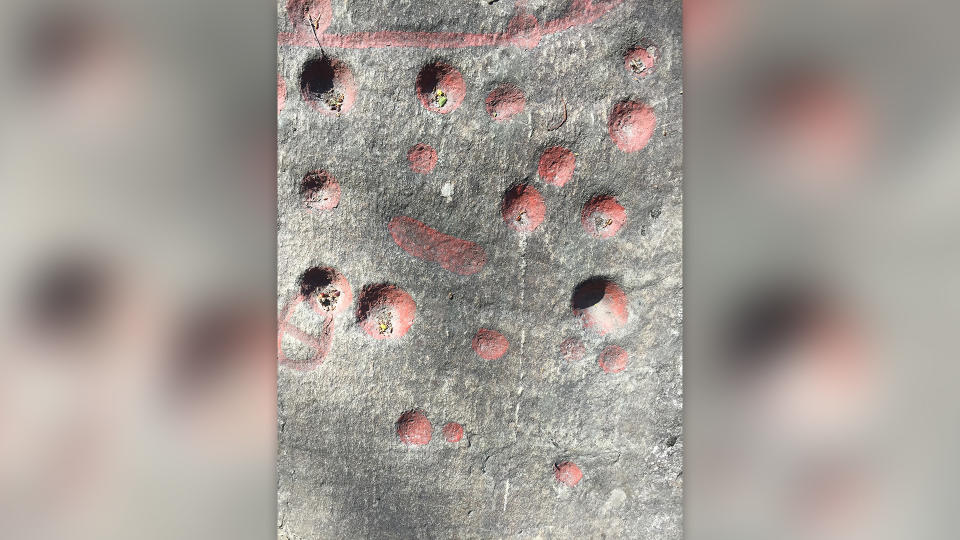13 of the world's oldest artworks, some crafted by extinct human relatives

What constitutes art is heavily debated, and that's especially true for prehistoric art. But here are some of the contenders for the title of the world's oldest art. Many were made by anatomically modern humans, but some were not.
Related: Did art exist before modern humans? New discoveries raise big questions.
1. Mesolithic cave paintings

Mention prehistoric art, and most people think of cave paintings like those in Chauvet Cave near Avignon, France, or the Lascaux Caves near Bordeaux. But these are relatively recent and sophisticated examples of prehistoric art; most of the paintings in Chauvet Cave, for example, were made by early modern humans between 28,000 and 37,000 years ago, while those in the Lascaux Caves are thought to have been created even more recently, around 17,000 years ago.
2. Mesolithic bone carvings

Europe is famous for its prehistoric art, and for a time, archaeologists thought representational art might have originated there. Sculptures made from animal bones, which are easier to carve than stone and last longer than wood, have turned up in France, Spain and Germany. This photograph shows the Venus of Brassempouy, which was discovered in France and dates to about 25,000 years ago.
3. Venus figurines

The term "Venus," the Greek goddess of love, is used for more than 200 prehistoric figurines of women, usually carved from soft stone or bone, found throughout Europe. Most date to the Gravettian period of the Homo sapiens occupation of Europe, between 26,000 and 21,000 years ago, but the oldest, found in Germany, may be more than 35,000 years old. This photograph shows the famous Venus of Willendorf from Austria, which was carved in stone about 30,000 years ago.
4. Indonesian pig

The depiction of a "warty pig" in a rock art panel on the Indonesian island of Sulawesi is thought to be about 45,500 years old and may be the earliest "representational" art ever found. Researchers say that prehistoric Indonesia was a "hotspot" for rock art and that early work like this challenges the idea that the tradition of rock art started in Europe and spread from there.
5. Neanderthal wall carvings

There are earlier instances of art crafted by early modern humans, and for a long time, archaeologists thought only Homo sapiens were capable of creating art. But recent discoveries suggest that Neanderthals, our closest human relatives, also created art. The carvings on a cave wall in France were made up to 75,000 years ago — many thousands of years before H. sapiens arrived in Europe.
6. Neanderthal bone carving

Neanderthals carved bone, too, and archaeologists think Neanderthals also likely carved wood, which has not survived. This carved toe bone of a giant deer was found in a cave in Germany. Archaeologists think it was made by Neanderthals about 51,000 years ago, long before H. sapiens arrived in the region. It's been hailed as one of the earliest symbolic carvings ever found, although what it symbolizes isn't known.
7. South African "hashtag"

This rock flake from Blombos Cave in South Africa was marked in red ochre with crisscrossed lines likened to a modern "hashtag" symbol. It's thought to be about 73,000 years old, and archaeologists think it was probably made by early H. sapiens.
8. Eagle talon pendants

These eagle talons found in an ancient rock shelter in Croatia were collected by Neanderthals, who may have fashioned them into pendants 130,000 years ago. The artifacts were unearthed a century ago, but their great age was only recently realized.
9. Hominin wood

Wood is easy to carve, but it usually rots when exposed to air and quickly perishes. So it's no wonder that many wooden objects created by Neanderthals and even earlier hominins have probably perished completely, which is why archaeologists have never found any. But the remains of a 476,000-year-old wooden structure found in Zambia were preserved in clay and show the skillful use of wood that archaic hominins likely used to create artworks.
10. Tibet handprints

Fossilized children's handprints around a hot spring in Tibet could be 200,000 years old, according to one study, and they may represent some of the oldest art ever found. The prints were made in travertine stone around the spring, which is soft when it's wet and hardens when it dries. But archaeologists debate whether such behavior constitutes art and whether the Tibet prints are as old as claimed.
11. Zigzag shell

These zigzag patterns on a shell found in Indonesia are thought to have been made up to 540,000 years ago by the hominin Homo erectus. The intent behind the pattern is not clear, but archaeologists note that similar patterns are still being made today.
12. Rock cupules

Prehistoric rock "cupules" have been found on almost every continent and were produced by many cultures over the ages. It's not known what, if anything, the carved pits or cups represent, but archaeologists think the earliest may be 1.7 million years old.
13. Stone spheroids

RELATED STORIES
—Centuries-old technique reveals hidden '3D' animals in Paleolithic cave art
—Mysterious rock art painted by Aboriginal people depicts Indonesian warships, study suggests
Baseball-size "spheroids" made from soft rock have been found at toolmaking sites in Africa, Asia and Europe. The earliest are up to 2 million years old, but it's not known what their purpose was. A recent study analyzed the stone spheroids mathematically and suggested they were attempts to impose spherical "symmetry" on roughly round balls of rock. The researchers didn't call these "art," but they noted that some ancient hand axes also show symmetry.

